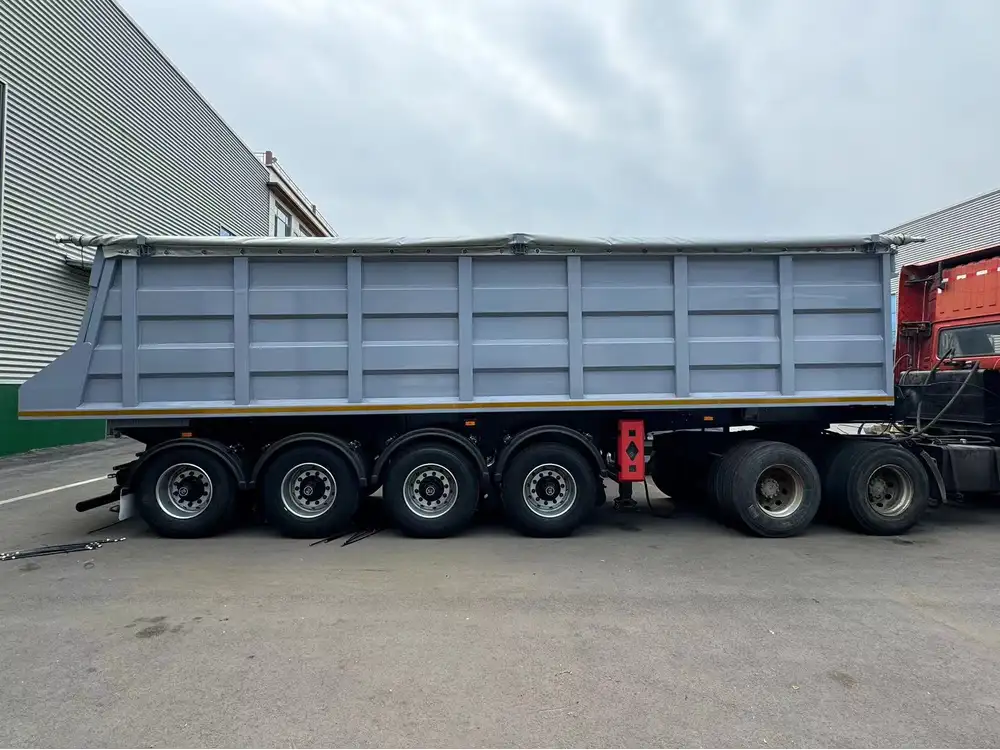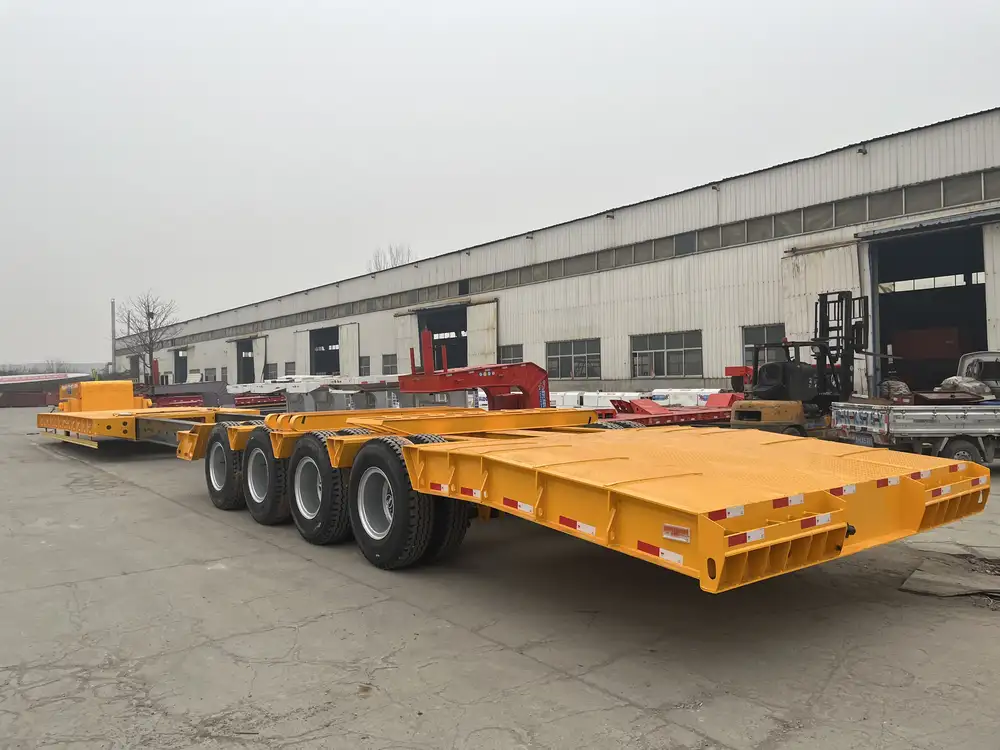Understanding the capacity of a semi-trailer for transporting logs is crucial for those operating within the logging and logistics sectors. The efficiency of operations often hinges on knowing just how many logs can securely fit into these large transport vehicles, ensuring optimal loads while adhering to safety regulations. This comprehensive exploration will delve into various factors that influence log capacity, including dimensions, weight limits, and transport considerations.
Table of Contents
- Understanding Semi-Trailer Specifications
- Assessing Log Dimensions
- Calculating Log Volume and Weight
- Load Distribution and Weight Regulations
- Factors Affecting Load Capacity
- Practical Examples
- Conclusion
Understanding Semi-Trailer Specifications

Dimensions of a Standard Semi-Trailer
Before delving into the specifics of how logs fit within a semi-trailer, it’s essential to understand the common dimensions of these trailers. A standard semi-trailer, especially those designed for hauling lumber, typically has the following specifications:
- Length: 48 to 53 feet
- Width: 8.5 feet
- Height: 13.5 feet
These dimensions allow for a significant volume capacity.
| Specification | Measurement |
|---|---|
| Length | 48 – 53 Feet |
| Width | 8.5 Feet |
| Height | 13.5 Feet |
Semi-Trailer Types
Common types of semi-trailers used for log transport include flatbeds and logging trailers. The choice will depend on the logistics of transporting either freshly cut logs or processed lumber with varying dimensional requirements.
Assessing Log Dimensions

Standard Log Sizes
Logs come in various sizes and dimensions, affecting how many can fit into a trailer. Standard log lengths range typically between 8 to 16 feet, depending on species and market requirements. For this guide, we will consider logs of the following common dimensions:
- Small Log: 8 feet long, 12 inches in diameter
- Medium Log: 12 feet long, 16 inches in diameter
- Large Log: 16 feet long, 20 inches in diameter
Calculating Space for Logs
When considering the capacity of a semi-trailer for log transport, spacing and arrangement play an essential role. The logs need to be arranged judiciously to maximize space while ensuring safety and stability during transport.
Calculating Log Volume and Weight

Volume of Logs
Log volume is typically calculated using the Doyle Log Scale or Scribner Log Rule, which accounts for log diameter and length. For the purpose of this article, let’s illustrate the calculation for a medium log:
Volume Calculation:
- Formula (Scribner Rule):
[ Volume = \left( \frac{(\text{Diameter in inches})^2 \times \text{Length in feet}}{16} \right) ]
For a medium log, the calculation would be: [ Volume = \left( \frac{(16)^2 \times 12}{16} \right) = 192 \text{ board feet} ]
Weight Considerations
The weight of logs varies with species and moisture content. A general rule of thumb is that one cubic foot of hardwood weighs around 60 lbs while softwoods average about 35 lbs per cubic foot.
Weight Calculation Example: Using the above medium log as an example:
- Volume: 192 board feet
- Assuming an average weight of 50 lbs per cubic foot, the estimated weight would be:
[ Weight = 192 \text{ (board feet)} \times \left( \frac{1 \text{ cubic foot}}{12 \text{ board feet}}\right) \times 50 = 800 \text{ lbs} ]
Load Distribution and Weight Regulations

Federal Weight Limits
Regulations dictate that a semi-trailer’s total weight, including its contents, typically should not exceed 80,000 lbs for highway transport in the U.S. Understanding these weight restrictions is paramount for logistics management.
Load Distribution
Proper distribution of weight within the trailer is critical to maintaining stability. Logs must be stacked and secured in such a way that the weight is evenly distributed across the trailer’s axles.
| Log Size | Approximate Width | Approximate Length | Estimated Volume (FBM) | Estimated Weight (lbs) |
|---|---|---|---|---|
| Small Log | 1 ft | 8 ft | 48 | 180 |
| Medium Log | 1.5 ft | 12 ft | 192 | 800 |
| Large Log | 2 ft | 16 ft | 320 | 1200 |
Factors Affecting Load Capacity
While the theoretical number of logs that can fit into a semi-trailer is informative, practical considerations often introduce variability:
- Log Arrangement: Variations in log diameter and length require consideration of how logs are stacked.
- Securing Loads: The method used to secure logs influences how tightly they can be packed.
- Driver Regulations: Operators must adhere to legal weight specifications, reducing the volume of logs that can be loaded based on total weight.
- Road Conditions: Cushioning and height limits can affect spacing and stability during transportation.

Ideal Scenarios for Maximizing Load Capacity
In scenarios where a combination of small, medium, and large logs need to be transported, thinking outside the box regarding stacking patterns can optimize loading. For instance, stacking smaller diameter logs on top of larger ones can mitigate the risk of crushing while allowing for a more efficient space utilization.
Practical Examples
To illustrate the complexities involved, let’s analyze a scenario where a standard 53-foot semi-trailer is filled with a combination of logs. The trailer can accommodate 45,000 lbs of payload.
Example Calculation
Calculating how many of each log size fits in a 53-foot trailer:
Small Logs:
- Average weight per log: 180 lbs.
- Max logs = 45,000 lbs / 180 lbs = 250 logs.
Medium Logs:
- Average weight per log: 800 lbs.
- Max logs = 45,000 lbs / 800 lbs = 56 logs.
Large Logs:
- Average weight per log: 1200 lbs.
- Max logs = 45,000 lbs / 1200 lbs = 37 logs.

Combining Logs
Suppose we opt for a mixed load of:
- 100 small logs (total 18,000 lbs)
- 20 medium logs (total 16,000 lbs)
This results in:
- Total Weight: 18,000 + 16,000 = 34,000 lbs
- Remaining capacity: 45,000 – 34,000 = 11,000 lbs, which would permit approximately 9 large logs, bringing the total to 129 logs.
Conclusion
Determining how many logs can fit into a semi-trailer is a blend of mathematics, regulations, and practical application. Whether for fresh logs or processed timber, mastering load calculations and understanding specifications can dramatically enhance logistical efficiency. As we have seen through this thorough exploration, ensuring safe, efficient transport is not merely about counting numbers; it’s about precision and adaptability to maximize productivity in the logging industry. By grasping these dynamics, stakeholders from manufacturers to logistics operators can optimize their operations and make informed decisions that benefit both the bottom line and the industry at large.



